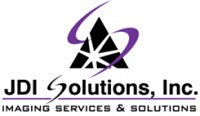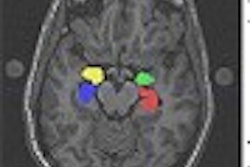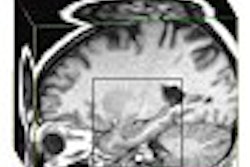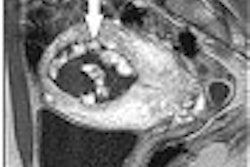
We are pleased to present part one of a two-part series on used MRI equipment. The opinions expressed in this article are those of the author, and do not necessarily reflect the views of AuntMinnie.com.
By Clark Wilkins
This article is an attempt to give prospective buyers some insight into the problems, and solutions, that typically arise when purchasing pre-owned imaging equipment. The information is oriented towards Siemens Medical Solutions MRI systems, but much of it can easily be applied to other manufacturers and modalities. Our business specializes in the reinstallation and support of pre-owned MRI systems. This article is based on our first-hand experience of what occurs in these projects -- especially the things that can go wrong.
Budgeting
The first question to ask is how much are you willing to spend? It doesn't matter how much you’re budgeting. The project will find a way to absorb all excess funds available. A good rule of thumb is to plan a project and then add 25% for cost overruns.
Before you start shopping for equipment, get with your financial people and come up with a solid "not to exceed" figure.
Once you know how much you can afford to spend on equipment, you can solicit proposals. It will be much easier for you and for the resellers if you are clear on the amount you’re willing to spend before you ask for quotes. It saves time on both sides of the deal, and starts the relationship with the reseller off on the right track.
Getting what you need
Now that you have a budget set for the equipment, it’s time to consider your options. You can move into low-, medium-, or high-field systems in all price ranges -- each with their own tradeoffs.
Benefits of buying older equipment
- Older equipment can be dramatically less expensive. If you’re willing to use a 10-year-old scanner, you can have it for almost nothing.
- Parts for older scanners are much cheaper too, so repairs are less expensive. As the price of equipment drops below a certain point, it becomes economically feasible to purchase a unit for parts. This is a huge benefit to the end user as well as the independent service organization (ISO), because the used parts are usually 25%-50% of the original equipment manufacturer's (OEM) list price.
Problems with buying older equipment
- Older scanners can have software that has been "frozen" -- there is no ongoing development of new sequences.
- The hardware is often obsolete, and cannot be upgraded to take advantage of new techniques.
- Installation of older systems tends to take considerably longer because the equipment is not as highly integrated. There are usually more cables and more steps in the installation process.
- OEMs do not want to provide service on older equipment. Most OEMs have reduced their field engineering staffs by 50% or more in the past 10 years. The engineers do not want to work on older equipment because it breaks more often and they already feel overworked.
Older scanners can have a lot of wear and tear. This is less of an issue for MRI systems, which have few moving parts.
Benefits of buying newer equipment
- Generally, newer equipment has more advanced imaging techniques, runs faster, is more highly integrated, and is more reliable.
- OEM service is much easier to arrange on newer equipment.
Problems with buying newer equipment
- It's much more expensive.
- Your options for the installation of the equipment become more limited because newer equipment often requires proprietary software and hardware that may only be available from the OEM.
- Your service options may be limited to the OEM's products.
Open versus closed systems
Speaking only from Siemens experience, we have found that open systems are sometimes difficult to site because they have a low tolerance for interference from the external environment. Superconducting (closed-bore) systems, particularly those with active shielding, seem to be much more tolerant of external disturbances such as moving automobiles.
However, if your target patient population includes a high percentage of claustrophobic or obese people, you will find these patients to be much happier overall with open-magnet systems. We have heard of patients weighing more than 500 lbs (200 kg) who could still be scanned on an open MRI system.
There is no obvious correlation between open and closed systems with respect to price.
Benefits of open systems
- Fewer problems with patient claustrophobia.
- Lower-field systems have smaller scan area requirements.
- Ability to scan heavier (larger) patients.
Problems with open systems
- Reduced signal-to-noise ratio (SNR), especially in low-field systems.
- More susceptible to interference from the outside environment.
- Generally harder to get good images; often very specific techniques or post-processing are needed for good results.
Benefits of closed systems
- Better SNR, especially in higher-field systems.
- Less susceptible to interference from the outside environment.
Problems with closed systems
- More problems with patient claustrophobia.
- Usually more expensive than comparable open systems.
Lower versus higher field strength
The physics of MRI dictate that SNR improves as field strength increases. Some imaging techniques benefit more than others do. This is an area where the radiologists should be consulted.
In general, higher field-strength systems cost more and hold their value longer.
CP and phased-array coils
Circular-polarized (CP, also known as "quad") coils use two antennas and additional electronics to improve the SNR. As previously mentioned, radiologists like them because they produce clearer pictures.
CP coils have become so prevalent that they rarely present cost considerations anymore.
Phased-array coils incorporate groups of smaller coils. These smaller coils, called elements, usually have a higher SNR for reasons related to their size. Additional electronics and wiring is installed to allow for the simultaneous use of multiple elements. This is most notably demonstrated on a spine-array coil, which can provide coverage of the entire spine in a single protocol.
Phased-array systems are significantly more expensive than comparable systems without this upgrade.
Gradient strength
This is another area where the radiologists should be consulted. Many advanced imaging techniques, such as protocols for detecting strokes, require stronger gradients. In general, higher-strength gradients cost more.
Computing power
In terms of pure speed, computing power is pretty much a non-issue these days. Most systems built since 1990 can calculate images fast enough to eliminate any effect on patient throughput. You'll spend much more time getting patients on and off the table than waiting for post-processing to finish.
Getting what you paid for
Here is where the problems really start. We work for many resellers, and rarely do we find that the customer's understanding of what has been purchased matches the reality. Read on for ways to avoid misunderstandings.
Know the options you are purchasing
Before you sign the sales agreement, verify with the reseller that the options you paid for are included in the contract. If the reseller says the options will be added later or are not important, it's probably time to move on to another piece of equipment from another reseller.
The truth about equipment brokers
It is an unavoidable consequence of our business that most brokers don’t understand what they are selling. And, in all but a few cases, they have never seen (nor will they see) the equipment.
The lack of understanding is an unavoidable result of most brokers' having to deal with a wide variety of equipment, ranging from small x-ray machines to large MRI systems. And they usually buy and sell any manufacturer's equipment they can locate.
This makes it impossible for them to maintain more than a passing familiarity with the product they are trying to sell you. The variety is simply too much for them to keep track of, so they have to pass along a specification sheet for the equipment that they are unable to verify.
Similarly, a broker handling tens to hundreds of deals a year cannot afford to inspect every piece of equipment they are offered for sale. The travel and time costs would be extraordinary. The net result is that verification of the equipment is almost always left to the user by means of an As-Is, Where-Is contract.
The truth about OEMs
The last thing in the world an OEM cares about is a piece of pre-owned equipment that's going away. Often the broker has been obligated to take the equipment in on trade, and figures to recover little of its value.
If the new equipment is from the same manufacturer as the old, you can usually insist on a survey by the OEM's service engineers. If you are very lucky, you will get a relatively complete survey of the coils and options. More often, the inspection is performed by an overworked and harried engineer who does little more than walk through the room very quickly.
If the new equipment is from another manufacturer, you have little to no chance of getting a valid assessment. The overworked service engineer probably doesn't even know how to turn the machine on -- much less how to properly test it.
Of course, this is a generalization and you might get lucky. Or you might end up like a friend we know who had the equipment inspected by the OEM, sold it to a customer, and found out six months later that the equipment did not have options listed on the OEM inspection report. This sort of thing happens all the time.
The only way to be protected is to have a qualified independent firm travel to the site and conduct a complete inspection.
You may argue that this is really the seller's responsibility. Perhaps you're right. But in the end, the cost of the inspection can dwarf the cost of replacing missing options at the manufacturer’s list price.
Come back tomorrow for Part II: An insider’s guide to buying a used MRI -- installation.
By Clark WilkinsAuntMinnie.com contributing writer
September 22, 2003
JDI Solutions was founded in 1996 by Clark Wilkins, who spent the previous 10 years as a service engineer for Siemens Medical Solutions. The company has been a member of the International Association of Medical Equipment Remarketers and Servicers (IAMERS) since 2000. JDI Solutions can be contacted by phone at 800-974-9729 in the U.S., at 828-883-8881 outside the U.S., or visit the Web site at www.jdis.com.
Related Reading
Imaging center learns startup lessons the hard way, August 12, 2003
Financial modeling assesses viability of imaging center venture, July 14, 2003
MRI design resonates with functional, aesthetic qualities, July 22, 2002
Facility-planning implications of the new MRI safety guidelines, September 9, 2002
AHRA speaker helps used equipment buyers avoid problems, September 9, 2000
Copyright © 2003 JDI Solutions



















